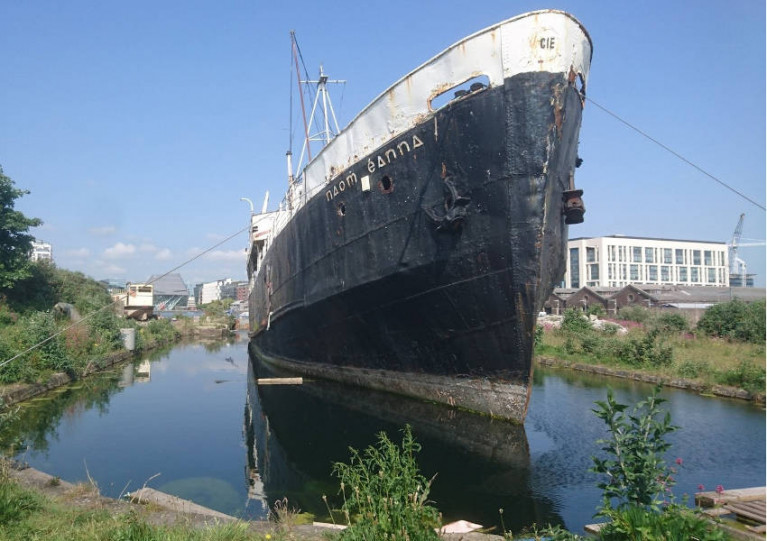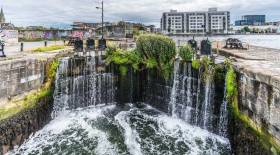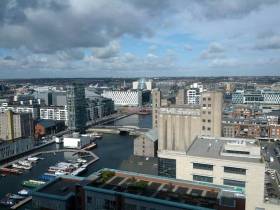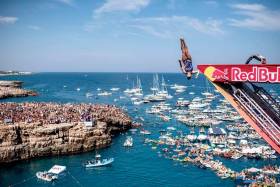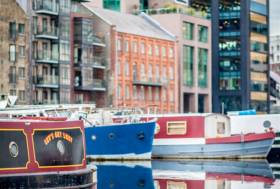Displaying items by tag: Grand Canal Dock
Houseboat Dwellers Fear Displacement From Grand Canal Dock Over Proposed Hike in Fees
Waterways Ireland has been accused of attempting to gentrify Grand Canal Dock with plans to hike annual fees for houseboat dwellers by nearly 700 per cent.
Residents among the 30 vessels at the Dublin city centre mooring told The Journal that they have no objection in principle to an increase in the annual mooring fees, which include access to electricity, water and refuse collection.
But they argue that the sharp rise from €578 annually to €4,000, rising to €7,500 over six years, is “not affordable or realistic”.
In response, the cross-border body for Ireland’s inland waterways says the proposed rise in charges is in line with the “superior” facilities at Grand Canal Dock — adding that any houseboat owners unwilling to pay would be “facilitated at an alternative location”.
The Journal has more on the story HERE.
Waterways Ireland ‘Continues to Examine Options’ for Grand Canal Graving Docks Site, Heritage Minister Says
Waterways Ireland is “continuing to examine options” for the graving docks at Dublin’s Grand Canal Dock, according to the Minister for Heritage.
Responding to a recent written question from Dublin Bay South TD Chris Andrews regarding the graving docks and their intended future use, Minister Darragh O’Brien said the site, also known as City Block 19, “is designated within the North Lotts and Grand Canal Strategic Development Zone (SDZ) for residential, commercial and community development”.
He added: “Waterways Ireland is continuing to examine options including a potential disposal of the site. Should a disposal be progressed a minimum reserve price would be placed on the site reflecting a fair market value.”
As previously reported on Afloat.ie, plans to sell off the heritage graving docks in Ringsend have been mooted for more than two years.
The cross-border body for Ireland’s inland waterways confirmed in February 2021 that it was “considering a range of options” regarding the sale of the site, which is one of the last undeveloped land parcels of the Docklands Strategic Development Zone.
Waterways Ireland advises masters of vessels and users of the Grand Canal in Dublin that works to Camden Lock in Grand Canal Dock will commence on Monday 3 April.
This will involve the lowering of the water level in Grand Canal Dock by approximately 400mm to accommodate the works on the sea lock.
Water levels were gradually lowered during past week commencing Monday 27 March and will remain low for a period of eight weeks.
Masters of vessels should contact Waterways Ireland prior to undertaking passage in Grand Canal Dock during the works, the cross-border body for Ireland’s inland waterways adds.
Changing Face of Grand Canal Dock Features on RTÉ’s Nationwide
Tune into this past Wednesday’s edition of Nationwide on the RTÉ Player to catch presenter Anne Cassin taking in the sights of Dublin’s Grand Canal Dock from the water.
Anne joins a tour hosted by Jim O’Riordan of the Inland Waterways Association of Ireland’s (IWAI) Dublin branch on the restored Liffey Ferry around the changing face of the canal basin — once a neglected past of the city as seen in a U2 video from 40 years ago, but now home to such corporate giants as Google.
There’s still four weeks left to watch the segment which starts at eight minutes into the Wednesday 9 February edition of Nationwide, available for viewers in Ireland on the RTÉ Player HERE.
Waterways Ireland has notified masters and owners of vessels at Grand Canal Dock in Dublin that diving operations originally set to take place on Thursday 10 June will now go ahead on Tueaday 15 June.
The operation is for an underwater survey of the anchor systems on the existing moorings in Grand Canal Basin. The cross-border body for Ireland’s inland waterways apologies for any inconvenience caused.
Waterways Ireland Confirms Plans to Sell Off Grand Canal Graving Docks
The Irish Times reports that Waterways Ireland has confirmed plans to sell off the heritage graving docks at Dublin’s Grand Canal Dock.
The inland waterways authority says it is “currently considering a range of options” regarding the sale of the site, which is one of the last undeveloped land parcels of the Docklands Strategic Development Zone.
Dating from the 1790s, the dry docks have most recently hosted the base of operations for Viking Splash Tours — purchased last month by a Liverpool firm after facing liquidation amid continued pandemic restrictions — as well as the historic former Aran Islands ferry Naomh Éanna.
Four years ago, suggestions that Waterways Ireland had been planning to sell what’s regarded as a key piece of the canal basin’s Georgian architecture prompted a local activist group to appeal to the then Heritage Minister to intervene.
And campaigners have again expressed their dismay, claiming that Waterways Ireland has “reneged on previous assurances” that the docks would be restored for the benefit of the local community.
The Irish Times has more on the story HERE.
Waterways Ireland says it is currently preparing drawings and methodologies for a planning submission to Dublin City Council on works to replace the sea lock at Grand Canal Dock.
In 2018, the cross-border body for Ireland’s inland waterways commenced a programme of works to restore the lock chamber and gates in order to bring the lock back into operation.
The existing lock gates at Camden Lock, which date from the canal’s opening in 1796, are in a derelict state and have not been operated for over 30 years.
They are currently tied open, and the lock has been closed off by the installation of stop logs on the dock side of the chamber.
However, the Camden Lock chamber is generally in a good structural condition.
The lock structure, existing timber gates, all associated machinery including sluice boxes and gate winches, stones sets and limestone paving are all designated and classified as a heritage structure.
Initial regeneration works by the Dublin Docklands Development Authority beginning in 2002 concentrated on decontamination of the land at Grand Canal Dock.
Redevelopment of the area has continued steadily since then and includes the Bord Gais Energy Theatre, Google Docks and numerous new apartment buildings located along the perimeter of the dock.
The proposed works for Camden Lock are split in two distinct areas, beginning with preparatory works:
- Installation of temporary steel stop logs
- De-watering the lock, dredging and sediment removal from the lock floor and initial cleaning of the walls
- Removal of the existing derelict gates
Surveying of the lock chamber and existing gates in advance of construction of the new gates
This phase would be followed by the refurbishment works:
- Installation of new timber lock gates (replicas of the existing), including new access for all pedestrian walkway over the breast gates
- Installation of hydraulic rams, to allow for automation of the new gates
- Aquatic vegetation removal, racking out and repointing of joints
- Preservation of the integrity of the heritage site, including: all gate machinery, winch mechanisms, wheels, pot and pintels; wall ring insets; stone sets and limestone paving
Waterways Ireland Floats ‘Village Market’ Among Ideas For Grand Canal Dock Development
A floating food market is one of a number of ideas being mooted for in Grand Canal Dock by Waterways Ireland, the Dublin InQuirer reports.
Such a scheme would include a waterfront dining area and a co-working space along with the “curated, carefully selected floating village market on canal barges”, as suggested in a feasibility study conducted late last year.
Local councillors also recently heard of plans to develop the triangle of land Waterways Ireland owns at South Dock Road and Grand Canal Street Upper, where the canal basin and the River Dodder meet the Liffey.
The lands currently house two Georgian era graving docks, one of which is where the former Aran Islands ferry Naomh Éanna is being restored as a luxury hotel.
However, concerns remain that Waterways Ireland’s plans could be detached from the wants and needs from the local community in Ringsend.
The Dublin InQuirer has much more on the story HERE.
Dublin’s Grand Canal Dock Added To Red Bull Cliff Diving World Series Schedule For 2019
Sunday 12 May is the date to save for the debut of the Red Bull Cliff Diving World Series at Dublin’s Grand Canal Dock.
The capital hosts the annual high diving series for the first time after three previous visits to Inis Mór, the most recent two years ago.
For this 11th season, Ireland marks the second stop in a seven-event schedule between April and September that includes the remote splendour of Palawan in the Philippines, the natural cliff face of Raouché in Beirut and the famous Stari Most bridge in Bosnia.
As with going into the series’ most recent Irish visit in 2017, the respective reigning men’s and women’s champions are Gary Hunt from the UK and Rhiannan Iffland from Australia.
However, the rest of the line-up is all change — with multi-time world champion Orlando Duque relegated to wildcard status and making way as new faces join the action.
Free Tours of Grand Canal Dock Houseboats During Open House Dublin Next Month
#InlandWaters - Houseboat tours in Grand Canal Dock will feature of Open House Dublin 2017 from 13 to 15 October.
The Irish Architecture Foundation has teamed up with Waterways Ireland to offer tours of four such houseboats stationed in the capital’s South Docklands to see if life on the water could be for you.
Homes on show include The Adriana, a Dutch barge built in 1898 as a working boat and converted into a live-aboard leisure craft in the 1980s.
The Barge Rambl'n Home Houseboat is a Collingwood wide-beam barge built to live on, while The Stil Mor Houseboat is a wide-beam narrow boat barge, and The Endeavour is a sensitively restored narrow canal barge.
Waterways Ireland will also be offering tours of ‘The Box in the Docks’, its building over the water at Grand Canal Dock and accessed by a footbridge from the quay wall.
Built in 1993, it was designed to represent a nautical theme, reflected in the round windows, the open aspect of the guardrails and the wooden decking of the walkway.
The floor-level windows give the impression that the building is moving through water or that you are even on a boat. The rooftop also offers one of the finest views of the Docklands.
Tours over the weekend of Open House Dublin will be on a first come, first served basis: simply turn up and look out for Open House Dublin volunteers. Given the space and weight restrictions of the house boats, small groups of two to three people will be allowed into each house boat for five minutes at a time.


























